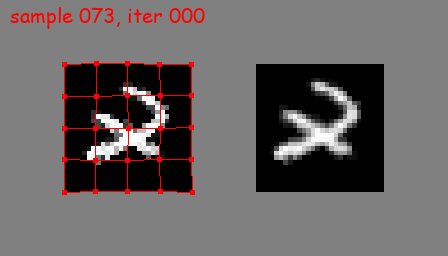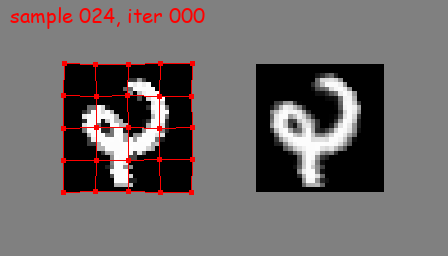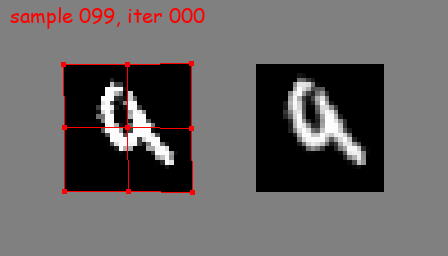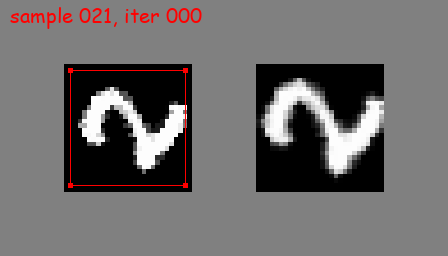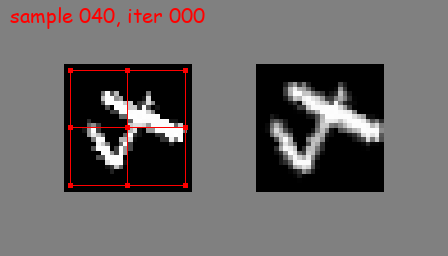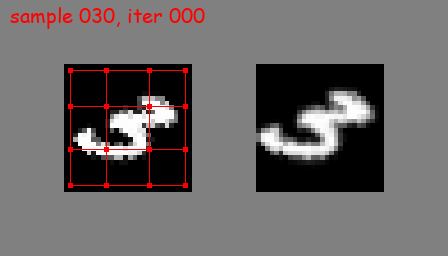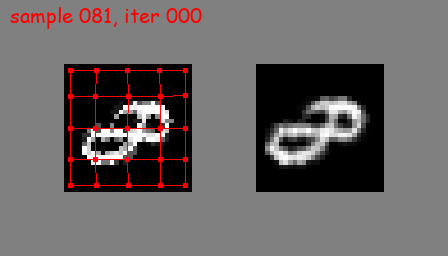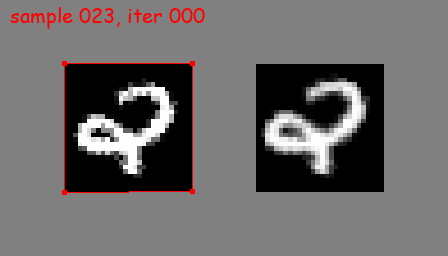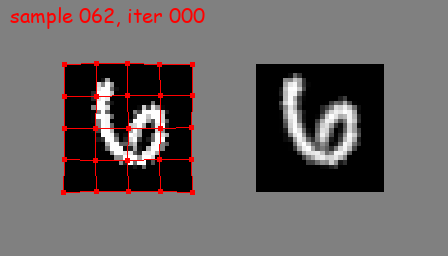tps_stn_pytorch
PyTorch implementation of Spatial Transformer Network (STN) with Thin Plate Spline (TPS).
Introduction
STN is a powerful neural network architecture proposed by DeepMind in [1]. STN achieves real spatial invariance by automatically rectify input images before they are feeded into a normal classification network. The most amazing part of STN is that it is end-to-end differential and can be directly plugged into existing network architectures (AlexNet, Resnet, etc), without any extra supervision.
Original STN paper [1] experiments on three specific transformation forms: Affine Transformation, Projective Transformation and Thin Plate Spline Transformation (TPS). Among them I think TPS is the most powerful translation because it can warp a image in arbitrary way. As shown below, I can warp my Avatar
into
TPS-STN has been used in OCR application [2]. In this paper TPS-STN is to automatically rectify distorted text images, before they are feeded into a normal OCR text recognition model:
Dependencies
- Python3
- PyTorch
- Torchvision
- Numpy
- Matplotlib
- Pillow / PIL
- imageio
I use imageio to create GIF visualization. Simply install it by pip install imageio.
Run
python mnist_train.py --model unbounded_stn --angle 90 --grid_size 4
python mnist_visualize.py --model unbounded_stn --angle 90 --grid_size 4
python mnist_make_gif.py --model unbounded_stn --angle 90 --grid_size 4
Then PNG and GIF resutls will be saved in ./image/unbounded_stn_angle60_grid4/ and ./gif/unbounded_stn_angle60_grid4/.
You can try other combinations of model architecture, mnist random rotation angle and TPS grid size. Details below.
Arguments
There are three controllable arguments: --model, --angle, --grid_size.
--model: str, required
- With
no_stn, STN module is discarded and only a single CNN classifier remains. - With
bounded_stn, the output of localization network is squeezed to [-1, 1] byF.tanh, as was done in [2] - With
unbounded_stn, the output of locolizaition network is not squeezed
--angle: int, default = 60
- Samples in MNIST dataset will be rotated by random angles within
[-angle, angle]
--grid_size: int, default = 4
- Use
(grid_size x grid_size)control points to define Thin Plate Spline transformation
Test Accuracy Curves
Visualize TPS-STN
Results with angle = 90 are generally bad:
Results with bounded_stn are bad if grid_size <= 3:
But ok if grid_size >= 4:
Results with unbounded_stn are ok:
Of course there are always bad cases in each combination. You can download all my GIFs from Baidu Netdisk (file size 2G).
Reference
[1] Spatial Transformer Networks
[2] Robust Scene Text Recognition with Automatic Rectification

